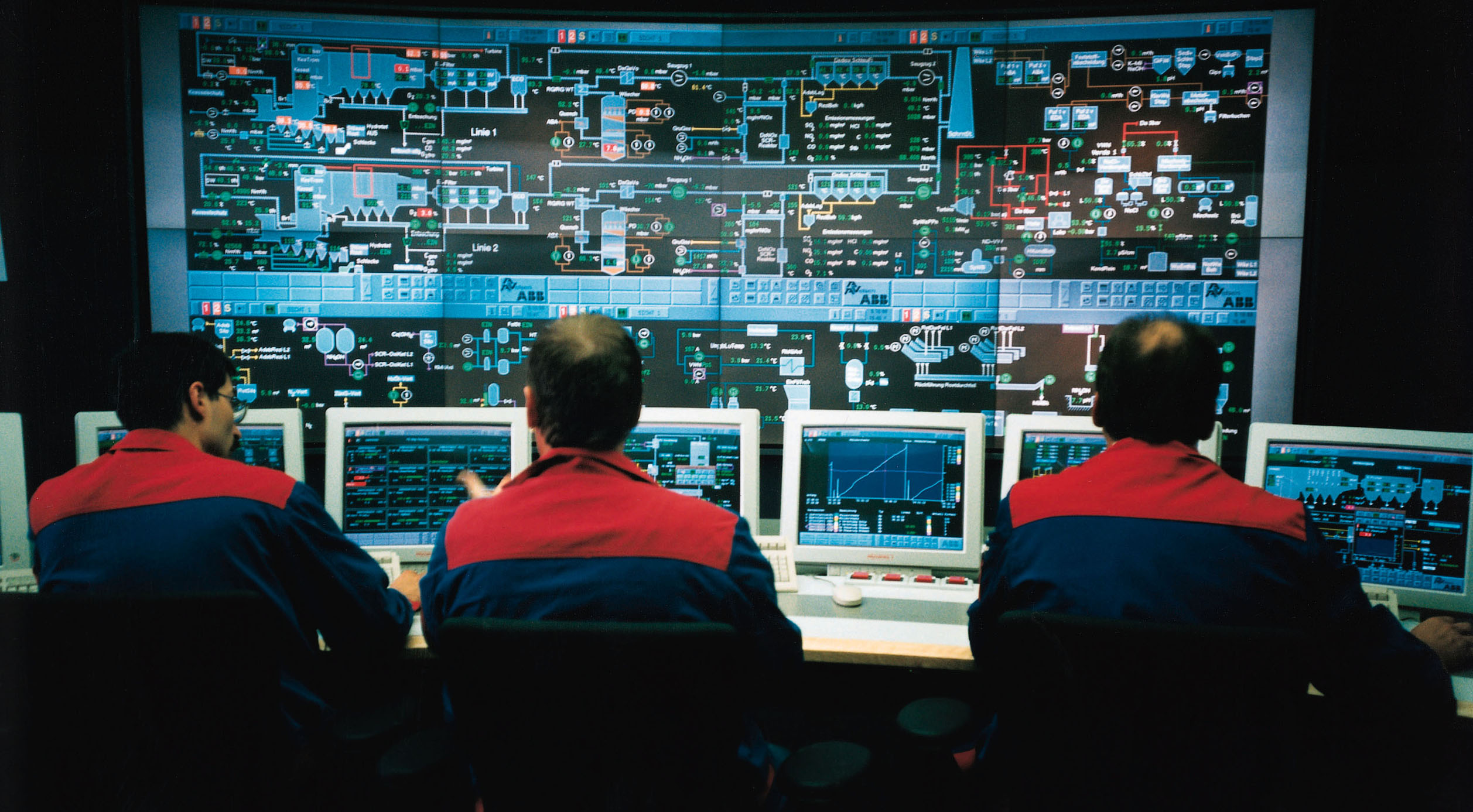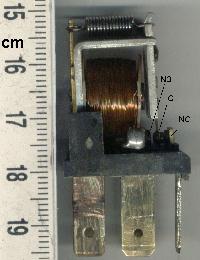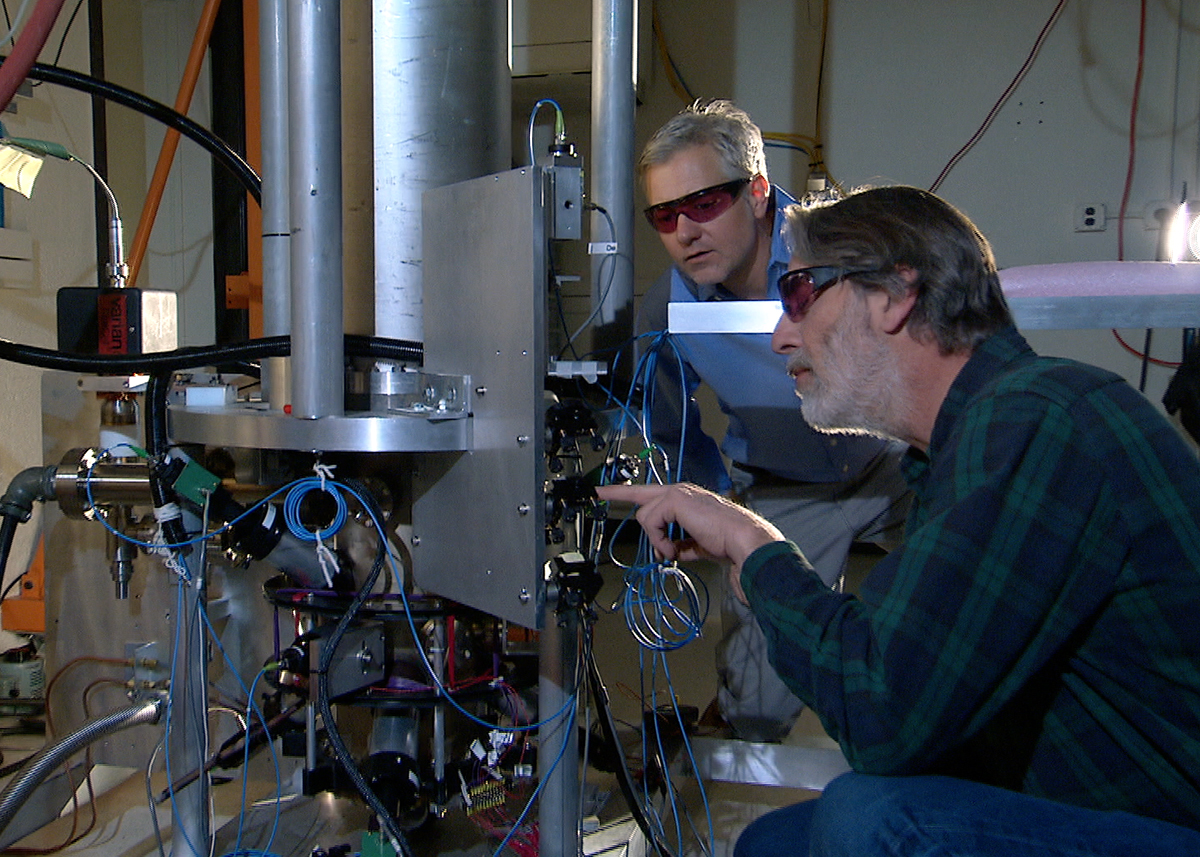|
Phase Locked Loop
A phase-locked loop or phase lock loop (PLL) is a control system that generates an output signal whose phase is fixed relative to the phase of an input signal. Keeping the input and output phase in lockstep also implies keeping the input and output frequencies the same, thus a phase-locked loop can also track an input frequency. Furthermore, by incorporating a frequency divider, a PLL can generate a stable frequency that is a multiple of the input frequency. These properties are used for clock synchronization, demodulation, frequency synthesis, clock multipliers, and signal recovery from a noisy communication channel. Since 1969, a single integrated circuit can provide a complete PLL building block, and nowadays have output frequencies from a fraction of a hertz up to many gigahertz. Thus, PLLs are widely employed in radio, telecommunications, computers (e.g. to distribute precisely timed clock signals in microprocessors), grid-tie inverters (electronic power converters used ... [...More Info...] [...Related Items...] OR: [Wikipedia] [Google] [Baidu] |
Control System
A control system manages, commands, directs, or regulates the behavior of other devices or systems using control loops. It can range from a single home heating controller using a thermostat controlling a domestic boiler to large industrial control systems which are used for controlling processes or machines. The control systems are designed via control engineering process. For continuously modulated control, a feedback controller is used to automatically control a process or operation. The control system compares the value or status of the process variable (PV) being controlled with the desired value or setpoint (SP), and applies the difference as a control signal to bring the process variable output of the plant to the same value as the setpoint. For sequential and combinational logic, software logic, such as in a programmable logic controller, is used. Open-loop and closed-loop control Feedback control systems Logic control Logic control systems for indus ... [...More Info...] [...Related Items...] OR: [Wikipedia] [Google] [Baidu] |
Photovoltaics
Photovoltaics (PV) is the conversion of light into electricity using semiconducting materials that exhibit the photovoltaic effect, a phenomenon studied in physics, photochemistry, and electrochemistry. The photovoltaic effect is commercially used for electricity generation and as photosensors. A photovoltaic system employs solar modules, each comprising a number of solar cells, which generate electrical power. PV installations may be ground-mounted, rooftop-mounted, wall-mounted or floating. The mount may be fixed or use a solar tracker to follow the sun across the sky. Photovoltaic technology helps to mitigate climate change because it emits much less carbon dioxide than fossil fuels. Solar PV has specific advantages as an energy source: once installed, its operation does not generate any pollution or any greenhouse gas emissions; it shows scalability in respect of power needs and silicon has large availability in the Earth's crust, although other materials required ... [...More Info...] [...Related Items...] OR: [Wikipedia] [Google] [Baidu] |
Electromechanical
Electromechanics combine processes and procedures drawn from electrical engineering and mechanical engineering. Electromechanics focus on the interaction of electrical and mechanical systems as a whole and how the two systems interact with each other. This process is especially prominent in systems such as those of DC or AC rotating electrical machines which can be designed and operated to generate power from a mechanical process ( generator) or used to power a mechanical effect ( motor). Electrical engineering in this context also encompasses electronics engineering. Electromechanical devices are ones which have both electrical and mechanical processes. Strictly speaking, a manually operated switch is an electromechanical component due to the mechanical movement causing an electrical output. Though this is true, the term is usually understood to refer to devices which involve an electrical signal to create mechanical movement, or vice versa mechanical movement to create an ele ... [...More Info...] [...Related Items...] OR: [Wikipedia] [Google] [Baidu] |
NIST-F2
NIST-F2 is a caesium fountain atomic clock that, along with NIST-F1, serves as the United States' primary time and frequency standard. NIST-F2 was brought online on 3 April 2014. Accuracy NIST-F1, a cesium fountain atomic clock used since 1999, has a fractional inaccuracy (δ''f / f'') of less than . The planned performance of NIST-F2 is δ''f / f'' < . Als available from NIST directly At this planned performance level the NIST-F2 clock will not gain or lose a second in at least 300 million years. Evaluated accuracy The evaluated accuracy (''u''''B'') reports of various primary frequency and time standards are published online by the |
Atomic Clock
An atomic clock is a clock that measures time by monitoring the resonant frequency of atoms. It is based on atoms having different energy levels. Electron states in an atom are associated with different energy levels, and in transitions between such states they interact with a very specific frequency of electromagnetic radiation. This phenomenon serves as the basis for the International System of Units' (SI) definition of a second: The second, symbol s, is the SI unit of time. It is defined by taking the fixed numerical value of the caesium frequency, \Delta \nu_\text, the unperturbed ground-state hyperfine transition frequency of the caesium-133 atom, to be when expressed in the unit Hz, which is equal to s−1. This definition is the basis for the system of International Atomic Time (TAI), which is maintained by an ensemble of atomic clocks around the world. The system of Coordinated Universal Time, Coordinated Universal Time (UTC) that is the basis of civil time implements ... [...More Info...] [...Related Items...] OR: [Wikipedia] [Google] [Baidu] |
Mechanical Clock
A clock or chronometer is a device that measures and displays time. The clock is one of the oldest human inventions, meeting the need to measure intervals of time shorter than the natural units such as the day, the lunar month, and the year. Devices operating on several physical processes have been used over the millennia. Some predecessors to the modern clock may be considered "clocks" that are based on movement in nature: A sundial shows the time by displaying the position of a shadow on a flat surface. There is a range of duration timers, a well-known example being the hourglass. Water clocks, along with sundials, are possibly the oldest time-measuring instruments. A major advance occurred with the invention of the verge escapement, which made possible the first mechanical clocks around 1300 in Europe, which kept time with oscillating timekeepers like balance wheels., pp. 103–104., p. 31. Traditionally, in horology (the study of timekeeping), the term ''clock'' w ... [...More Info...] [...Related Items...] OR: [Wikipedia] [Google] [Baidu] |
Time
Time is the continuous progression of existence that occurs in an apparently irreversible process, irreversible succession from the past, through the present, and into the future. It is a component quantity of various measurements used to sequence events, to compare the duration of events (or the intervals between them), and to quantify rates of change of quantities in material reality or in the qualia, conscious experience. Time is often referred to as a fourth dimension, along with Three-dimensional space, three spatial dimensions. Time is one of the seven fundamental physical quantities in both the International System of Units (SI) and International System of Quantities. The SI base unit of time is the second, which is defined by measuring the electronic transition frequency of caesium atoms. General relativity is the primary framework for understanding how spacetime works. Through advances in both theoretical and experimental investigations of spacetime, it has been shown ... [...More Info...] [...Related Items...] OR: [Wikipedia] [Google] [Baidu] |
Voltage-controlled Oscillator
A voltage-controlled oscillator (VCO) is an electronic oscillator whose oscillation frequency is controlled by a voltage input. The applied input voltage determines the instantaneous oscillation frequency. Consequently, a VCO can be used for frequency modulation (FM) or phase modulation (PM) by applying a modulation, modulating signal to the control input. A VCO is also an integral part of a phase-locked loop. VCOs are used in synthesizers to generate a waveform whose Pitch (music), pitch can be adjusted by a voltage determined by a musical keyboard or other input. A voltage-to-frequency converter (VFC) is a special type of VCO designed to be very linear in frequency control over a wide range of input control voltages. Types VCOs can be generally categorized into two groups based on the type of waveform produced. * ''Linear'' or ''harmonic oscillators'' generate a sinusoidal waveform. Harmonic oscillators in electronics usually consist of a resonator with an amplifier that re ... [...More Info...] [...Related Items...] OR: [Wikipedia] [Google] [Baidu] |
Feedback Loop
Feedback occurs when outputs of a system are routed back as inputs as part of a chain of cause and effect that forms a circuit or loop. The system can then be said to ''feed back'' into itself. The notion of cause-and-effect has to be handled carefully when applied to feedback systems: History Self-regulating mechanisms have existed since antiquity, and the idea of feedback started to enter economic theory in Britain by the 18th century, but it was not at that time recognized as a universal abstraction and so did not have a name. The first ever known artificial feedback device was a float valve, for maintaining water at a constant level, invented in 270 BC in Alexandria, Egypt. This device illustrated the principle of feedback: a low water level opens the valve, the rising water then provides feedback into the system, closing the valve when the required level is reached. This then reoccurs in a circular fashion as the water level fluctuates. Centrifugal governors were u ... [...More Info...] [...Related Items...] OR: [Wikipedia] [Google] [Baidu] |
Phase Detector
A phase detector or phase comparator is a frequency mixer, analog multiplier or Digital logic, logic circuit that generates a signal which represents the difference in phase between two signal inputs. The phase detector is an essential element of the phase-locked loop (PLL). Detecting phase difference is important in other applications, such as electric motor, motor control, radar and telecommunication systems, Servomechanism, servo mechanisms, and demodulators. Types Phase detectors for phase-locked loop circuits may be classified in two types.Paul Horowitz and Winfield Hill, ''The Art of Electronics 2nd Ed. '' Cambridge University Press, Cambridge, 1989 pg. 644 A Type I detector is designed to be driven by analog signals or square-wave digital signals and produces an output pulse at the difference frequency. The Type I detector always produces an output waveform, which must be filtered to control the phase-locked loop voltage-controlled oscillator (VCO). A type II detecto ... [...More Info...] [...Related Items...] OR: [Wikipedia] [Google] [Baidu] |
Variable Frequency Oscillator
A variable frequency oscillator (VFO) in electronics is an oscillator whose frequency can be tuned (i.e., varied) over some range. It is a necessary component in any tunable radio transmitter and in receivers that work by the superheterodyne principle. The oscillator controls the frequency to which the apparatus is tuned. Purpose In a simple superheterodyne receiver, the incoming radio frequency signal (at frequency f_) from the antenna is ''mixed'' with the VFO output signal tuned to f_, producing an intermediate frequency (IF) signal that can be processed downstream to extract the modulated information. Depending on the receiver design, the IF signal frequency is chosen to be either the sum of the two frequencies at the mixer inputs ( up-conversion), f_+f_ or more commonly, the difference frequency (down-conversion), f_-f_. In addition to the desired ''IF'' signal and its unwanted image (the mixing product of opposite sign above), the mixer output will also contain the t ... [...More Info...] [...Related Items...] OR: [Wikipedia] [Google] [Baidu] |
Electronic Circuit
An electronic circuit is composed of individual electronic components, such as resistors, transistors, capacitors, inductors and diodes, connected by conductive wires or Conductive trace, traces through which electric current can flow. It is a type of electrical circuit. For a circuit to be referred to as ''electronic'', rather than ''electrical'', generally at least one active component must be present. The combination of components and wires allows various simple and complex operations to be performed: signals can be amplified, computations can be performed, and data can be moved from one place to another. Circuits can be constructed of discrete components connected by individual pieces of wire, but today it is much more common to create interconnections by photolithographic techniques on a laminated Substrate (semiconductor), substrate (a printed circuit board or PCB) and solder the components to these interconnections to create a finished circuit. In an integrated circuit or ... [...More Info...] [...Related Items...] OR: [Wikipedia] [Google] [Baidu] |







